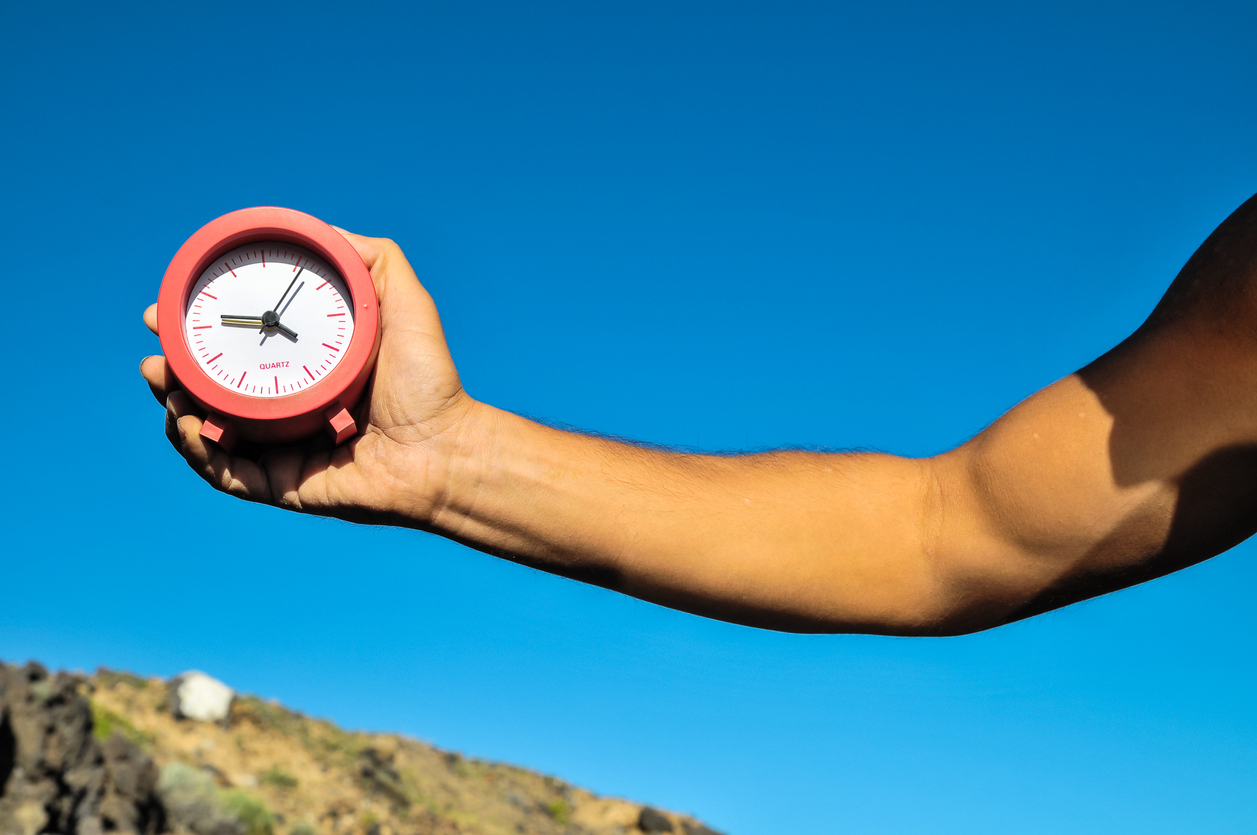The latest issue of Fitpro magazine features an insightful article about how to schedule training around a client’s muscle clocks. But what exactly are muscle clocks and how do they work? Amy Ashmore fills us in here.
What are muscle clocks?
There are more than 600 independent muscle clocks in your body. Muscle clocks are internal time pieces that align the internal events going on inside the body with whatever is happening outside. Working on a 24-hour schedule, muscle clocks play a critical role to synchronise the body and its functions for optimal fitness and sports performance and health.
The most important function of muscle clocks is their ability to anticipate exercise and get the body ready for it. By being aware of muscle clocks and learning how to programme exercise that best facilitates their action, you can help clients make the most of their workouts.
The purpose of all internal clocks, including muscle clocks, is to use information about the timing of events inside and outside of the body to align the body with the environment on a 24-hour schedule. Sticking to a regular workout schedule generates a unique circadian rhythm that prepares the muscles and other body systems for daily activity and rest times each day.
How do muscle clocks work?
For muscle clocks to work properly, they rely on consistent cues from their environment about the timing of daily events, including exercise1; therefore, the better an exercise programme is aligned to natural body cycles, the more effective it will be.
Muscle clocks monitor 24-hour periods like any other biological clock; however, they possess the unique function to synchronise skeletal muscle activity to the master clock located in the brain. In addition to communicating with the master clock, muscle clocks align daily muscle activity with natural body cycles (like fluctuations in hormone levels and body temperature), other organs and systems in the body (affecting the digestive system, liver and eating habits, for example) and external environmental events (like the change in light levels from day to night). Muscle clocks also communicate with each other, as well as other clocks in the musculoskeletal system, including tendon and ligament clocks.
Although the master clock in the brain exerts direct control over muscle clocks, muscle clocks do not exert direct control over the master clock. However, the critical caveat is that, via exercise, muscle clocks can indirectly influence the master clock.
When exercise is scheduled and done regularly at the same time each day, the body learns when to expect exercise. This ability to anticipate is how muscle clocks do their jobs to improve muscle performance, synchronise the muscles to the other body systems, increase health and fitness, and improve sleep and recovery2.
How do muscle clocks communicate?
Muscle clocks are genes. They are transcription factors, made up of proteins that help control muscle function. When skeletal muscles contract repeatedly, like while exercising, they release myokines, a type of protein unique to muscles. Myokines are recognised by the master clock and other biological clocks and organs as a signal that muscles are working. The release of myokines is how skeletal muscles and the other body systems communicate and, eventually, become synchronised during and after exercise to maximise performance and health benefits. The key to understanding how muscle clocks can optimise health and fitness is to recognise that they rely on timing.
Exercise design and programming
The research for the value of muscle clocks to muscle performance and health is compelling; however, we need to be able to apply it, and the way we do that is with strategic exercise programming. Muscle clocks rely on consistent cues from their environment about the timing of daily events, including exercise, to function properly; therefore, we need to know what those cues are and how to integrate them into exercise sessions.
When it comes to programming exercise, the cues that muscle clocks look for are the time of day of exercise (when), the type of exercise (mode) and the activity-rest durations (scheduled rest). Using these three programming variables strategically is the key to maximising the benefits based on our current knowledge about muscle clocks.
For more information about how to programme for muscle clocks, check out the Jan/Feb issue of Fitpro magazine. FitPro members can read the accompanying article by Amy in Fitpro magazine here. If you don’t already receive our bi-monthly Fitpro magazine, packed with inspiring and science-based articles, click here to learn more.
References
- Schroder EA & Esser KA (2013), Circadian rhythms, skeletal muscle molecular clocks and exercise, Exercise Sport Science Review, 41(4): 224-29.
- Mayeuf-Louchart A, Staels B & Duez H (2015), Skeletal muscle functions around the clock, Diabetes, Obesity, and Metabolism, 17(1, Suppl.): 39-46. doi:10.1111/dom.12517
Amy has recently created a new course for FitPro – so you can take your knowledge further. Check out ‘Rest and Recovery – How to maximise fitness results using strategic rest intervals’ now.








